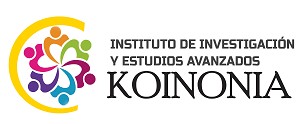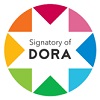La dislexia y su abordaje estratégico en la Educación Básica
Resumen
La presente investigación tuvo como objetivo analizar la dislexia y su posibilidad de abordaje estratégico en la educación básica. Metodológicamente se asumió el paradigma positivista, en correspondencia con una investigación de diseño bibliográfico-documental. Como conclusión, se establece que la dislexia es un trastorno de la lectoescritura que conlleva dificultades adicionales a nivel emocional y social, que limitan al estudiante en su quehacer diario impactando en todos sus procesos y contextos. Además, se reconoce la importancia de elaborar un programa de estrategias que permitan la adaptación del individuo tanto en la rutina diaria de clases, como en la interacción social con sus semejantes; implicando de igual modo, adaptaciones curriculares que facilitaran el proceso enseñanza-aprendizaje, teniendo en cuenta que la dislexia es una condición que no se cura, pero que si puede ser tratada, atendida y por ende mejorada, hasta el punto de lograr consolidar una lectura más fluida y analítica.
Descargas
Citas
Asociación Iberoamericana de Dislexia y Familia. (2021). Dislexia una Dificultad Específica de Aprendizaje. Mallorca, Es.: DISFAM. Recuperado de https://www.disfam.org/dislexia/
Bretones, M. (2015). Dislexia. [Mensaje en blog]. Recuperado de http://blog.clinicabretonesfernandez.es/2015/12/dislexia.html
Child Mind Institute (2021). La Dislexia: Guía completa: Nueva York, EU.: Child Mind Institute. Recuperado de https://acortar.link/NtbXYb
Díaz-Barriga, A. (2013). TIC en el trabajo del aula. Impacto en la planeación didáctica. Universia, 4(10), 3-21. Recuperado de https://www.scielo.org.mx/pdf/ries/v4n10/v4n10a1.pdf
Guirao-Goris, S., Ferrer, E. y Olmedo, A. (2008). El artículo de revisión. Revista Iberoamericana de Enfermería Comunitaria, 1(6). Disponible en
López, C. (2019). ¿Trastornos del Aprendizaje? [Mensaje en blog]. Recuperado de https://acortar.link/l0dd52
Maqueira, G., Arráez, J. y López, A. (2006). Las adaptaciones curriculares en la clase de educación física de menores que presentan estrabismo y ambliopía. Un estudio con base en la investigación acción. EF Deportes Revista Digital, 92. Recuperado de https://efdeportes.com/efd92/clase.htm
Mera, A. y Moya, M. (2019). La dislexia y su impacto en el aprendizaje educativo. Revista Atlante: Cuadernos de Educación y Desarrollo. Recuperado de https://www.eumed.net/rev/atlante/2019/08/index.html#google_vignette
Naranjo, M. (2007). Autoestima: un factor relevante en la vida de la persona y tema esencial del proceso educativo. Revista Electrónica "Actualidades Investigativas en Educación, 7(3). Recuperado de https://www.redalyc.org/pdf/447/44770311.pdf
Organización de las Naciones Unidas. (2015). Declaración Universal de Derechos Humanos. Recuperado de https://acortar.link/TjkTf
Ortega, P., Mínguez, R. y Rodes, M. (2000). Autoestima: un nuevo concepto y su medida. Teoría de la Educación. Revista Interuniversitaria, 12, 45-66. Recuperado de https://acortar.link/P2QWfj
Rosen, P. (s/f a). ¿Qué es Orton-Gillingham? Nueva York, EU.: Understood.org. Recuperado de https://acortar.link/PtugZz
Rosen, P. (s/f b). El programa Lindamood Bell: ¿Qué necesita saber? Nueva York, EU.: Understood.org. Recuperado de https://acortar.link/CZVsvD
Derechos de autor 2022 Magdalena Esther Navarrete-Zambrano, Zila Isabel Esteves-Fajardo, Karina Cecibel Arcos-Cárdenas, Alex Norberto Cazares-Bustamante

Esta obra está bajo licencia internacional Creative Commons Reconocimiento-NoComercial-CompartirIgual 4.0.
CC BY-NC-SA : Esta licencia permite a los reutilizadores distribuir, remezclar, adaptar y construir sobre el material en cualquier medio o formato solo con fines no comerciales, y solo siempre y cuando se dé la atribución al creador. Si remezcla, adapta o construye sobre el material, debe licenciar el material modificado bajo términos idénticos.
OAI-PMH URL: https://cienciamatriarevista.org.ve/index.php/cm/oai














